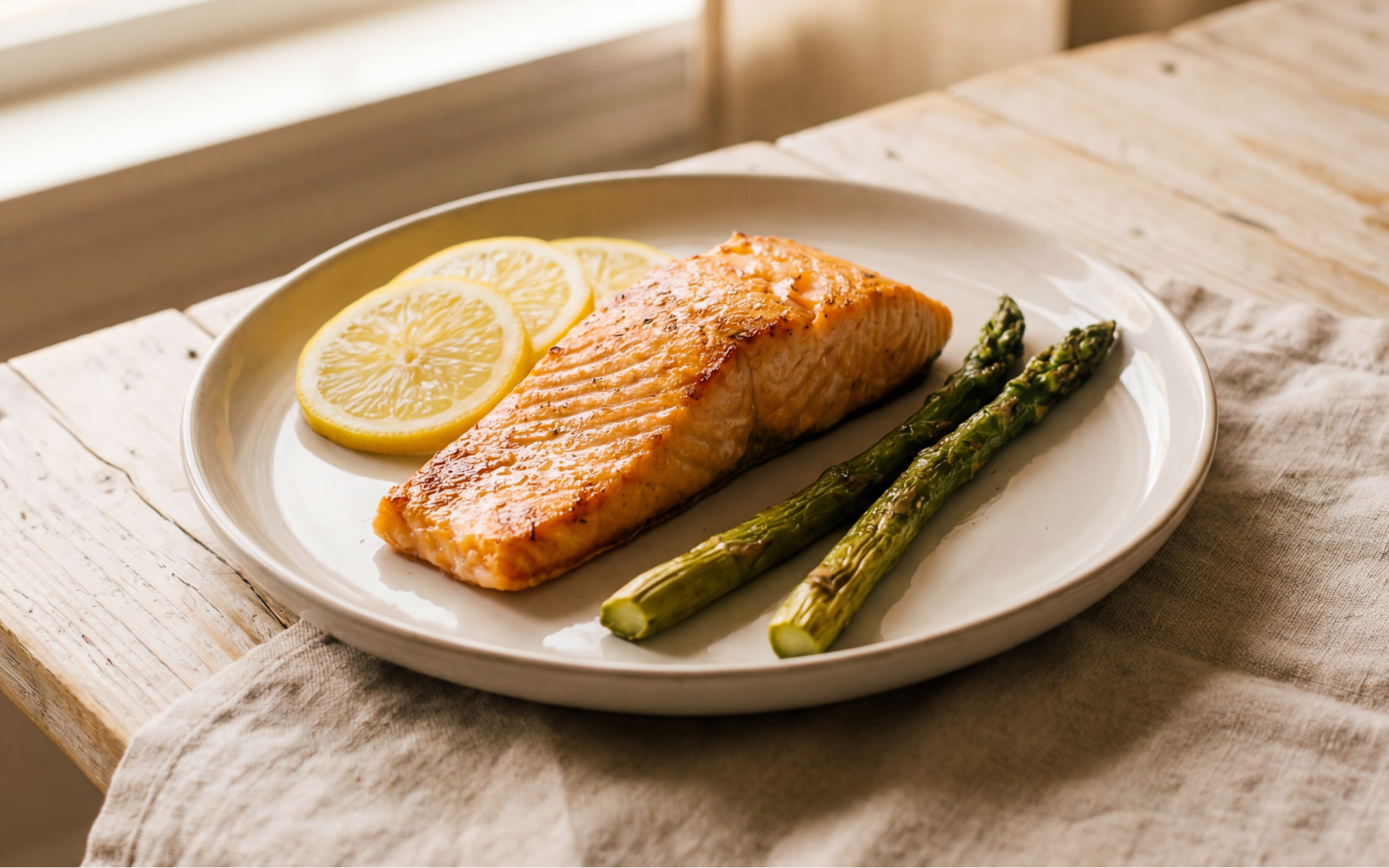Are you curious about intermittent fasting but need help figuring out where to start?
Or are you someone who fasts often but wants to expand their knowledge?
This guide is perfect for picking a fasting routine and learning something new about this popular eating pattern.
We will cover everything – from the basics of different fasting protocols to the potential health benefits, risks, and common misconceptions. Once done, you can take an intermittent fasting quiz and get a plan tailored to your needs.
Let’s cut to the chase!
What is the Best Way to Choose the Right Intermittent Fasting Method for You?
The world of intermittent fasting is vast. Learning about the multiple regimes could confuse you at the beginning.
Fasting schedules vary in their food intake restrictions and timing patterns.
Here are the most typical intermittent fasting schedules with descriptions:
12/12 or Overnight Fasting
The overnight fasting method is when you are not supposed to eat for 12 hours after dinner. It is suitable for beginners as most fasting hours lie within sleeping hours.
- Schedule: Pick a 12-hour fasting period. For example, your eating window is between 7 am and 7 pm. Outside of these hours, you refrain from eating.
- Rules: Make sure to eat your last bite before your eating period ends (so before 7 pm). Remember, you can still drink water and other drinks without calories, like herbal tea or black coffee, without added sugar, even when you are not eating (1). For more details about fasting meal plan for beginners, take a look at our prior publication.
BetterMe: Health Coaching app helps you achieve your body goals with ease and efficiency by helping to choose proper meal plans and effective workouts. Start using our app and you will see good results in a short time.
16:8, 14:10, or Time-Restricted Fasting
These intermittent fasting methods are the most popular. An intermittent fasting 16/8 pattern involves 16 hours of fasting and an 8-hour eating window. Likewise, 14/10 fasting is not eating for 14 hours and eating meals within 10 hours (2).
- Schedule: You get to pick when to start and stop fasting each day. Just try to keep it around the same time every day. Most people like to fast while they’re sleeping. For example, you could fast from 8 pm to 12 pm the next day (16 hours of fasting) or from 9 pm to 11 am the next day (14 hours).
- Rules: Make sure you have eaten before the eating time ends, and remember that you can enjoy low-calorie drinks during fasting periods. Prioritize hydration with water.
5:2 Intermittent Fasting
The 5/2 diet, called the fast diet, divides eating and fasting across the week.
It involves eating 5 days and fasting on the remaining 2 (non-consecutive) days of the week. This method is flexible as you can choose the fasting days that suit you according to your routine (3).
- Schedule: Pick 2 days each week to fast. Don’t fast on back-to-back days. Eat as you usually would on the other 5 days.
- Rules: When fasting, ensure you eat just a little – around 500-600 calories.
On regular eating days, eat your regular meals, but don’t try to make up for fasting by overeating. Our previous post goes into great detail about what food you can eat during intermittent fasting.
On fasting days, you can still have no or low-calorie drinks.
Alternate Day Intermittent Fasting
This schedule involves fasting every other day. Alternate-day fasting is an extreme method, also called the 4/3 method. It may be unsuitable for beginners, those with medical conditions, or older adults.
- Schedule: Fast for a full day, followed by eating regularly. Continue alternating between fasting and eating days. Some variations include fasting for 24 hours and up to 36 hours, then eating for 12 hours.
- Rules: There are 2 ways you can do this diet.
You can either not eat anything on your fasting day or just a little bit, around 500 calories, as needed. This method gives you flexibility by allowing a restricted calorie intake during fasting.
Read more: Fasting For 3 Days: Will It Get Your Metabolism Cranking At Full Speed?
Eat Stop Eat Intermittent Fasting
The eat-stop-eat fasting method involves fasting 24 hours 1-2 days a week. This method resembles the 5/2 method; however, the 5/2 intermittent fasting schedule allows you to eat about 500-600 calories during fasting periods.
The eat-stop-eat method focuses on going without any calories for the whole day.
- Schedule: Eat your usual meals for a day, then don’t eat anything for 24 hours (from 5 pm today to 5 pm tomorrow).
Go back to eating regular meals for 1 or more days after that.
You can fast once or twice a week but have at least one typical eating day between fasting days.
- Rules: Don’t eat any food while you are fasting. Low-calorie drinks and water are allowed.
When you are not fasting, you can eat whatever you want, but experts recommend easing back into eating times to avoid glucose, insulin spikes, or disrupting the digestive system (4.)
The options of all these schedules make it evident that intermittent fasting is flexible.
You can modify the plans according to your current fitness, weight objectives, and health conditions. Some people may face extreme circumstances, making IF dangerous for them.
For instance, research conducted in 2024 involving more than 20,000 adults revealed that individuals adhering to an eight-hour time-restricted eating plan had a significantly elevated risk — 91% higher — of dying from cardiovascular disease than those who consumed their meals over a 12 to 16-hour period each day (5).
Furthermore, the study highlighted that individuals already grappling with heart disease or cancer faced an even greater risk of cardiovascular-related death when following this restricted eating pattern.
Another potential risk to be aware of is the effects of fasting on people with Type 1 Diabetes. Without proper monitoring of glucose levels and diabetes education, you can risk experiencing hypoglycemia during fasting periods due to insulin medication dosages (6).
You should discuss your individual circumstances and health needs with your doctor before you begin a plan or make any other significant changes to your diet.
Read more: How Long Is It Safe To Fast: Are Long Or Short-Term Fasts More Effective?
Is Intermittent Fasting 12 or 16 Hours?
12:12 and 16:8 are both quite popular intermittent fasting schedules. Given their low-intensity but effective results, many adults choose either fasting option for their weight loss goals.
With both diet plans, you can reach ketosis when your body starts burning the fat it stores for fuel (7). The human body enters the first stages of ketosis around 12 hours of fasting.
If you want to reach full ketosis, then experts recommend 16 to 18 hours of fasting.
Research suggests fasting triggers autophagy, a process where your body breaks down and recycles old and damaged cellular components (8).
Over time, fasting for 16 hours allows you to experience the full benefits of autophagy and ketosis.
These results may vary from person to person, and you can still reach the first stages of autophagy and ketosis by fasting for 12 hours.
Excessive autophagy is harmful, and finding the right balance is essential (9).
We suggest a 12:12 fasting schedule for beginners. You can gradually expand your fasting windows when your stamina builds up.
Initially, you may experience symptoms like increased hunger and grumpy moods. Nonetheless, persistence and strong motivation can help you overcome and witness some incredible intermittent fasting benefits.
When it comes to weight loss, progress is made by inches, not miles, so it’s much harder to track and a lot easier to give up. The BetterMe: Health Coaching app is your personal trainer, nutritionist, and support system all in one. Start using our app to stay on track and hold yourself accountable!
What Is the Best Time for Intermittent Fasting?
The best time for intermittent fasting is usually from night to morning. For example, following a 16/8 schedule, you can spend most of the fasting window asleep.
Don’t have breakfast right after waking up; take an early lunch instead. This plan is even applicable if you are looking for intermittent fasting for women over 50 or a beginner who is not used to fasting.
Take our intermittent fasting quiz to get personalized guidance. We help you determine a good fasting window and the foods you should focus on during the eating window.
Why Am I Not Losing Weight on 16:8 Fasting?
If you have tried intermittent fasting according to the 16:8 schedule but aren’t losing weight, you need to analyze your intermittent fasting diet plan.
You may be overeating or making poor food choices. Try to reduce your calories, work on balancing your meals, or expand the fasting window.
Always talk to a registered dietitian about your individual experiences. They can help highlight mistakes and guide you on the best intermittent fasting for weight loss.
Studies suggest intermittent fasting can help people lose weight similarly to more traditional calorie restriction diets (10). Losing weight overall will include the loss of belly fat. All foods break a fast. However, you can enjoy non-caloric drinks like water, black coffee without sugar, unsweetened tea, and a squeeze of lemon mixed with water without breaking your fast. People who are intermittently fasting usually either skip breakfast or dinner. What works best for your lifestyle and schedule is entirely up to you. Yes, when you are intermittent fasting, sleep counts as part of your fasting time. You don’t eat or drink anything while you’re asleep.Frequently Asked Questions
Does fasting reduce belly fat?
What foods won’t break a fast?
Which meal is best to skip for intermittent fasting?
Does sleep count as fasting?
Summary
Choosing an intermittent fasting plan isn’t easy. You may find yourself falling off track despite your desire to commit. Don’t let these little setbacks keep you from sticking to a schedule.
Our intermittent fasting quiz is the first step towards making the changes that improve your lifestyle.
The thought-provoking questions will guide you to adopt a structured approach.
Remember, when it comes to food, what works for one person might not work for another. The best diet is the one you can keep up with over time.
If fasting makes you feel good and you can do it consistently, it’s a great way to lose weight and improve your health. Always talk to your healthcare provider before starting a fasting regimen.
DISCLAIMER:
This article is intended for general informational purposes only and does not serve to address individual circumstances. It is not a substitute for professional advice or help and should not be relied on for making any kind of decision-making. Any action taken as a direct or indirect result of the information in this article is entirely at your own risk and is your sole responsibility.
BetterMe, its content staff, and its medical advisors accept no responsibility for inaccuracies, errors, misstatements, inconsistencies, or omissions and specifically disclaim any liability, loss or risk, personal, professional or otherwise, which may be incurred as a consequence, directly or indirectly, of the use and/or application of any content.
You should always seek the advice of your physician or other qualified health provider with any questions you may have regarding a medical condition or your specific situation. Never disregard professional medical advice or delay seeking it because of BetterMe content. If you suspect or think you may have a medical emergency, call your doctor.
SOURCES:
- What We Drink (n.d., fammed.wisc.edu)
- Intermittent Fasting (2024, psoriasis.org)
- A 5:2 Intermittent Fasting Meal Replacement Diet and Glycemic Control for Adults With Diabetes – Randomized Clinical Trial (2024, jamanetwork.com)
- Eat Stop Eat Fasting Re-Feeding (n.d., mentalfoodchain.com)
- 8-hour time-restricted eating linked to a 91% higher risk of cardiovascular death (2024, newsroom.heart.org)
- Effects of Fasting on Type 1 Diabetes (2023, ncbi.nlm.nih.gov)
- The 5 Stages of Fasting and Ketosis (2024, perfectketo.com)
- The Beneficial and Adverse Effects of Autophagic Response to Caloric Restriction and Fasting (2023, https://www.ncbi.nlm.nih.gov/pmc/articles/PMC10509423/)
- Short-term fasting induces profound neuronal autophagy (2010, ncbi.nlm.nih.gov)
- Beneficial effects of intermittent fasting: a narrative review (2022, ncbi.nlm.nih.gov)










